There can be your advertisement
300x150
Children's Game Room: Tips for Setting Up
To open a children's game room, you don't need a license for educational activities or proof of employee qualifications. Additionally, the costs to organize this event will be much lower than opening a development center or children's garden.
Children's Game Room: How Profitable Is It?

Photo 1 — Example of Setting Up a Children's Room
To open a children's game room, you don't need a license for educational activities or proof of employee qualifications. Additionally, the costs to organize this event will be much lower than opening a development center or children's garden.
For example, if the area of the game room does not exceed 30 m² (with up to 20 children daily), costs can amount to approximately 10 thousand U.S. dollars.
This sum, by the way, includes:
- payment for renovation (around 15% of the amount);
- purchase of equipment (around 65%);
- rental fee (10%);
- official company registration (5%);
- employee salaries (5%).
Average monthly expenses for maintaining and operating the space can amount to about 1,500 U.S. dollars. Meanwhile, profits can reach 3,200 U.S. dollars. Thus, we have approximately 1,500–1,600 U.S. dollars in net profit.
In case of larger spaces, for example, a game room of 70 m² (with up to 70 children per day), the cost for setting up the space will be around 31,1 thousand U.S. dollars. Monthly expenses will amount to approximately 2,500 U.S. dollars, while revenue will be around 5,200 U.S. dollars.
IMPORTANT! A favorable forecast can only come true if you choose a profitable location for setting up the game area (a large cinema, hypermarket, shopping and entertainment center, etc.).
Children's game rooms can also be organized in children's goods stores, but this group usually doesn't bring much profit to the establishment, as the use of a children's room for center visitors is often free.
When searching for a location, consider the growing demand for such services: where is there the biggest potential audience looking to buy you a few hours of free time? For example, in residential areas where children's playgrounds are not yet established, your game room (especially in cold weather) can become almost the only available way for children to have fun.
Opening a Children's Game Room: What You Need
You must register a company with the tax authority. There are two registration options: as an LLC or as an Individual Entrepreneur (IE). The latter is optimal, as such registration will be cheaper and provide more financial opportunities in the future (e.g., the ability to use preferential tax regimes such as ENVD and USN, as well as patent-based taxation).
Choose the OKVED codes. It's better to specify: 92.7 (meaning: other activities related to organizing recreation and entertainment).
Register the company with the Pension Fund and other non-budget funds.
Purchase a cash register / strict accounting forms (they must be registered with the tax authority).
Ensure that the premises intended for setting up a game room comply with the requirements of the State Housing Inspection and Rospotrebnadzor.
Design of a Children's Game Room: Tips for Setting Up

Photo 2 — Children's Maze (20 m²), starting from $5,600
To set up a children's game room, you don't need to reinvent the wheel. If it's not about organizing a children's corner in a prestigious establishment (e.g., capital restaurants offering exclusive game zones), you can buy a 20 m² children's maze (see photo below) starting from $5,600. Additional costs should include setting up a workspace for employees, storage units or lockers for clothing and personal items — about $400 more.
These spatial structures are often made to order over the course of a month, but they can also be purchased ready-made (e.g., on sale). Game mazes can reach up to 100 m² or be sold as a 10 m² area. A game maze can include elements such as slides, obstacles, ramps, bridges, ladders, soft modules, climbing elements, a pool with plastic balls, and more.
In the case of ordering rather than buying a ready-made maze, a design project must be created, according to which the object is manufactured and installed.
It's important to consider age restrictions and tailor the content based on the age group of potential visitors: mazes can combine entertainment for children aged 3 to 12, or they can be designed for a specific age group.
When discussing game rooms for the youngest (ages 1.5 to 4.5), a soft corner with plush toys, various developmental construction sets (preferably with large pieces!), tables for creative activities, and more must be included. These corners can also be installed by parents in kindergartens as an alternative to outdated play areas.
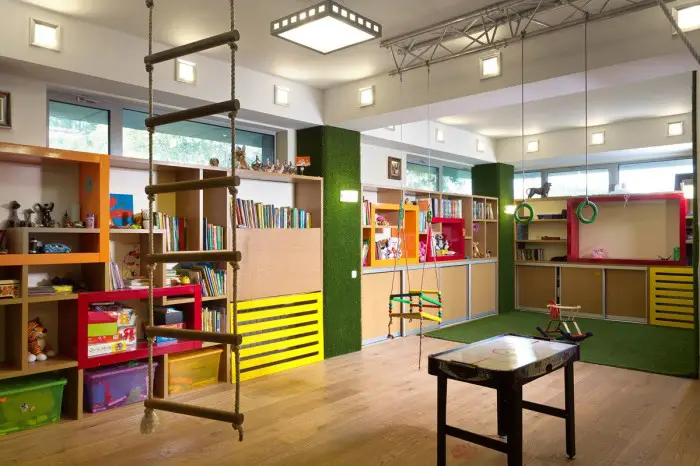
Photo 3 — Example of Setting Up a Kindergarten Game Room
Children's Play Zone at Home
The interior of any children's room should include a play zone. Everything else is subjective: whether it will be active or quiet games, developmental games, how much space you can allocate for organizing such a play zone – 2 m² or the entire room of 12–36 m², and how much you're willing to spend.
If combining, keep in mind that the children's room must strictly include:
- sleeping and rest zones;
- play zone;
- work area zone;
- closet zone.
It is not recommended to combine the first and second points for one simple reason: using a game bed as sleeping space will only encourage children to be active when it’s time to turn off the lights. Though, to be honest, sometimes a sleeping space is so beautifully integrated into the game room that you can let little ones pretend to be Mowgli, lying down in a tree house, or go on treasure hunts on a huge ship bed.
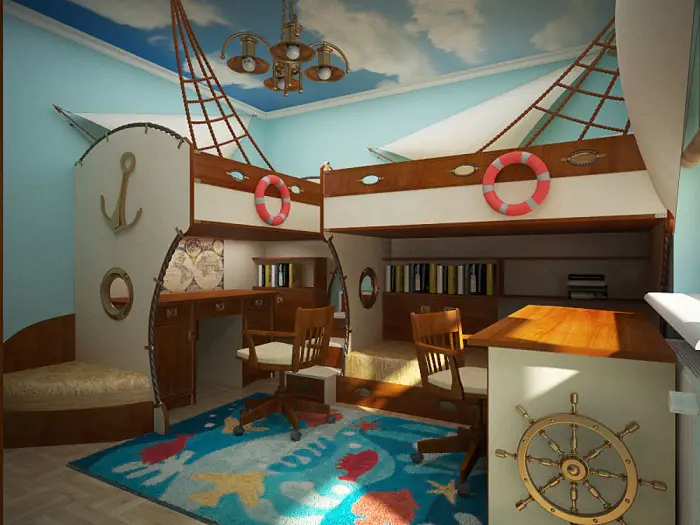
Photo 4 — Game Room in a Marine Style

Photo 5 — Marine Style in a Children's Room
Moreover, a “play zone” does not have to be an impenetrable jungle of thousands of decorative elements: sometimes just a drawing board, ladder or bar is enough, which you can make yourself without designers' help.
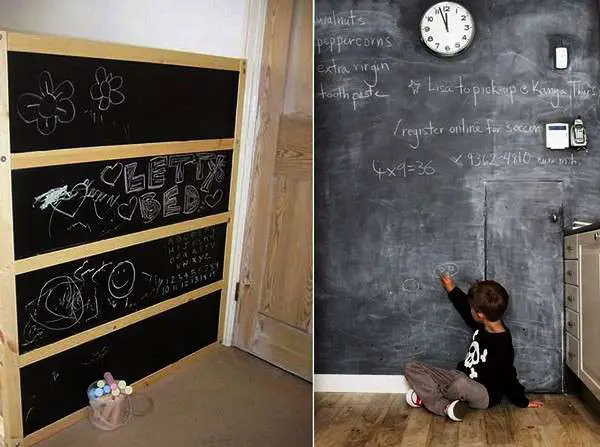
Photo 6 — School Board in a Children's Room
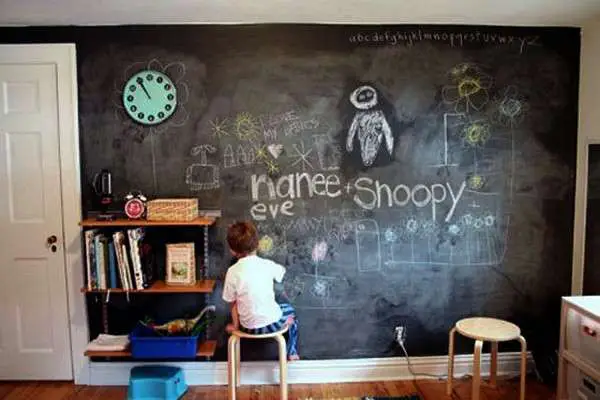
Photo 7 — One of the Best Ways to Entertain Children – Drawing on Walls
As for ideas for setting up a children's game zone at home, designers have plenty:
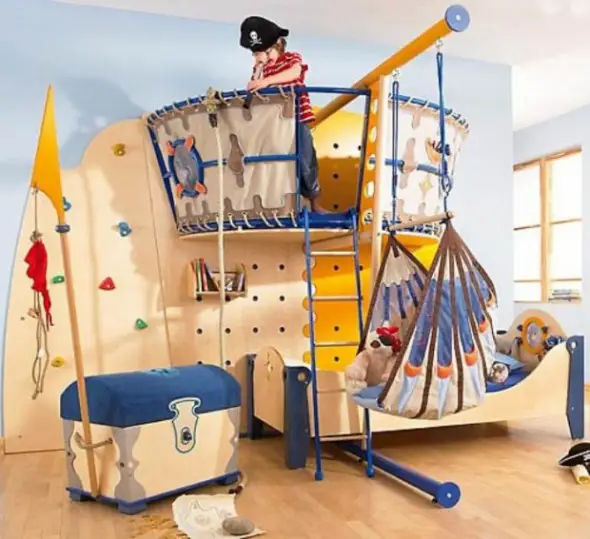
Photo 8 — Concept of Setting Up a Play Zone in a Children's Room

Photo 9 — Realization of a Design Project in the Children's Room

Photo 10 — Separated Play and Rest Zones in a Children's Room
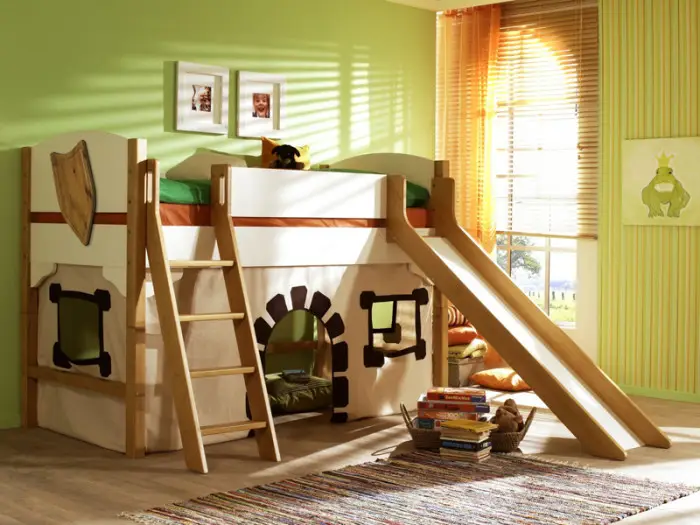
Photo 11 — Simple Way to Combine: Sleeping and Play Zones as a Slide
More articles:
 Design of a One-Room Apartment-Flat. In Tight Spaces, But Not in Anger
Design of a One-Room Apartment-Flat. In Tight Spaces, But Not in Anger Eco-Style Design of a One-Room Apartment-Studio
Eco-Style Design of a One-Room Apartment-Studio Design of a One-Room Apartment with a Niche. What Can Be Placed There?
Design of a One-Room Apartment with a Niche. What Can Be Placed There? Design of a One-Room Apartment with a Child's Room
Design of a One-Room Apartment with a Child's Room Design of a Small Studio Apartment for Newlyweds
Design of a Small Studio Apartment for Newlyweds Design Project of a Three-Room Apartment with Bedroom on Terrace
Design Project of a Three-Room Apartment with Bedroom on Terrace Design of a Three-Room Apartment P-44T: Converting a "Two-Room" into a "Three-Room" Apartment
Design of a Three-Room Apartment P-44T: Converting a "Two-Room" into a "Three-Room" Apartment Design of a Three-Room Khrushchyovka: Relocation Plans vs Reality
Design of a Three-Room Khrushchyovka: Relocation Plans vs Reality